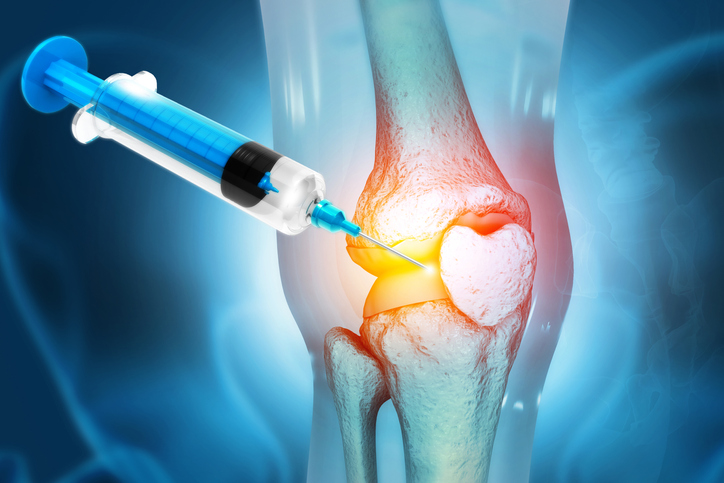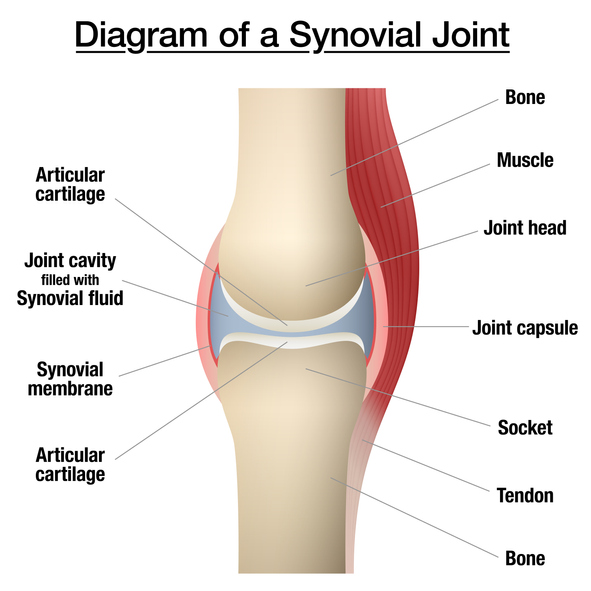We Must Be Proactive About Osteoarthritis, The Most Common Kind of Arthritis

By Joy Stephenson-Laws, JD, Founder
Joint health is key to healthy longevity, and many of us do not realize that joint issues can start relatively early in life. Take, for example, Actress Jennie Garth who was diagnosed with early-onset osteoarthritis at just 47-years-old.
“The actress revealed in a new interview that she began to feel stiffness in her fingers and hands at the age of 47 as well as pain in her knees whenever she stood up, but she was shocked to be diagnosed with the joint disease,” according to this report published in May of 2022.
“I was like, I’m too young for arthritis,” Garth said.
Osteoarthritis is the most common type of arthritis. It is a degenerative joint disease, meaning that it worsens over time. This disease is, “...caused by the breakdown of cartilage that afflicts more than 35 million adults in the U.S. The exact mechanism of cartilage breakdown in osteoarthritis is unknown, but damage from mechanical stress with insufficient self-repair is believed to be the main culprit,” (News Medical Life Sciences).
To really understand this devastating condition (which can cause so much pain and disability to the afflicted), let’s go over exactly what a joint is and the basic different parts of a joint.
“A joint (joynt) is where two or more bones are joined together. Joints can be rigid, like the joints between the bones in your skull, or movable, like knees, hips, and shoulders. Many joints have cartilage (KAHRT-uh-lij) on the ends of the bones where they come together. Healthy cartilage helps you move by allowing bones to glide over one another. It also protects bones by preventing them from rubbing against each other [friction which is a joint’s worst enemy],” according to the National Institute of Arthritis and Musculoskeletal and Skin Diseases.

Along with cartilage, that protective connective tissue, some other parts of the joint include:
- Synovial membrane. A connective tissue that lines the joint and protects it (including from friction). This membrane produces a fluid (called synovial fluid) that is lubricating and rich in matter necessary for a healthy joint environment.
- Ligaments. Think of ligaments as rubber bands. They connect bones together, provide support and even limit the amount the joints actually move.
- Tendons. These attach muscle to bone (remember, ligaments are bone to bone). These muscles tendons attach to control movement of the joint.
Depending on the case and progression, osteoarthritis can damage all of these parts mentioned as well as bone and meniscus in the knee. This may cause inflammation, swelling, stiffness and pain. To say that osteoarthritis can really affect quality of life is an understatement.
According to a recent Medical Xpress report discussing research about a new injectable cell therapy that helps treat osteoarthritis, this joint disease is such as problem that the Food and Drug Administration (FDA) recently identified osteoarthritis as a public health crisis that affects more than 520 million people worldwide “who deal with pain and inflammation.” It’s actually the leading cause of disability in the United States.
“In healthy joints when an injury occurs, the body recruits an army of inflammatory cells and sends them to the injury site to contribute to cleaning of the damaged tissues. In the osteoarthritic joint, however, a traumatic injury leads to inflammation of the synovial membrane and cartilage damage,” according to Medical Xpress.
It is promising that the new injectable cell therapy discussed in the report proved to help osteoarthritis patients, reducing pain and improving quality of life. The therapy exhibited that it could regenerate cartilage, which is huge.
Because I am so passionate about joint health, I wanted to see what else can be done to help prevent or delay the progression of osteoarthritis.
Get moving!This may sound counterproductive because exercise does cause wear and tear over time, but exercise is actually key.
“But if there's one osteoarthritis treatment an individual with osteoarthritis should do every day, it's exercise. Regular exercise strengthens muscles and improves flexibility and balance. It not only helps ease pain and stiffness but also improves overall health,” according to Harvard Health Publishing.
Being overweight or obese also puts more stress on the joints and can make osteoarthritis worse, so using exercise as a tool to maintain a healthy weight is critical. Pick activities you may enjoy such as walking, biking or swimming and also try to include strength training (as this helps maintain strong bones and muscles).
Get your vitamin E.
According to a study published by the National Institutes of Health (NIH), vitamin E may delay progression of osteoarthritis “by acting on several aspects of the disease.”
“Vitamin E is essential for the structural and functional maintenance of skeletal muscle.”
Foods that are rich in vitamin E include sunflower seeds, almonds, beet greens, spinach, red bell pepper, mango, avocado and asparagus. You can also speak with a competent healthcare professional about supplementation.
Standing in a cryogenic chamber for three minutes is not for the faint of heart, but trust me when I say it is so worth it! To get relief from my own joint issues, I just focused on getting rid of the inflammation so I could get on with my daily activities. Cold therapy definitely helps fight inflammation.
Whole body cryotherapy may speed up injury recovery, relieve pain and soreness, reduce lactic acids, reduce inflammation, decrease spasms, release endorphins, improve range of motion and so much more!
Also consider red light therapy.
Red light therapy is a form of low-level laser (light) therapy (LLLT). Red light has shown that it greatly helps with mitochondrial function. Almost every cell in our bodies have several thousand mitochondria.
According to one doctor who used red light therapy at home for three months (10 minutes a day, five days a week), red light therapy produces a low level inflammatory and free radical response which makes the body become more tolerant to cellular stresses in the future. You can read more about this here. Red light therapy has even been shown to help keep astronauts healthier while in space. With its powerful effects regarding inflammation and pain reduction, it would make sense that it could help with osteoarthritis.
A study published by the NIH found evidence suggesting that red light therapy as well as other forms of low-power light therapy improved pain and disability in elderly people with osteoarthritis of the knee.
We really must educate ourselves and do all we can to protect our precious joints. They really are the key to a happy, long life with plenty of independence and good times.
Enjoy your healthy life!
Disclaimer: This article is not intended to provide medical advice. Please consult with your doctor or another competent healthcare practitioner to get specific medical advice for your situation.
The pH professional health care team includes recognized experts from a variety of health care and related disciplines, including physicians, attorneys, nutritionists, nurses, and certified fitness instructors. This team also includes the members of the pH Medical Advisory Board, which constantly monitors all pH programs, products, and services. To learn more about the pH Medical Advisory Board, click here.







